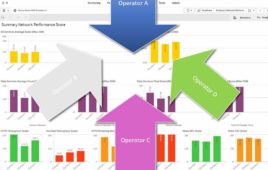The telecoms industry is going through massive disruption. Traditional revenue streams for Communication Service Providers (CSPs) are in decline, while a web of regulations threatens market nimbleness.
To make matters worse, global digital platforms – including Facebook, Google, Apple, and Amazon- are entering the core telecommunication market with innovative business models and technologies, leaving many CSPs to wonder if they can keep up or if they will be displaced.
These days, digital natives are monetizing consumers’ data and selling advertising space in order to provide services to users that are generally free. But while it is very difficult to compete with free, it is possible to remain competitive despite this challenge. To do this, CSPs are looking to new platforms that will enable them to leverage their unique position to generate new revenue streams.
At the heart of the IoT
CSPs are uniquely positioned at the front and center of today’s evolving connected ecosystem – powering the data that gives mobile devices, services, and the Internet of Things (IoT) access to content and connectivity, while also often also providing direct access to content and services for the smart home.
One way that CSPs can take advantage of this unique position is by continuously analyzing offer conversion rates, subscriber profiles, content usage, and network activity in order to more accurately create and place offers that are tailored and relevant to each subscriber.
Using Artificial Intelligence (AI) and behavioral data, CSPs can ensure that they present the right offer at the right time using the right channel for each subscriber. This helps CSPs connect subscribers with the most relevant and valuable services.
The art of upselling
Undoubtedly, the primary benefit for many CSPs is the opportunity to generate additional revenue, as AI can help CSPs connect subscribers with the services that they want most.
The right offer at the right time can increase customer satisfaction because subscribers get what they want. For example, using AI to help consumers find the video content they like will not only increase video on demand purchases, but also reduce churn and generally increase the time on the device – all of which drive more revenue to the CSP.
Upselling is a fine art – the wrong offer at the wrong time is spam. For instance, offering a prepaid subscriber who is running out of their fixed data allowance the opportunity to buy a small amount of data – just enough to get them through the last few days of their billing cycle – at a good price would be a valuable to the consumer. A week later, it is useless and just spam.
Driving new revenue
For CSPs looking to take advantage of subscriber intelligence to generate new revenue streams, there are three models that should be consider to reflect the different types of customers.
For subscribers with a post-paid account, CSPs need to target them with content and services that encourage them to use their high speed data services. This way, when they are running low on data they may appreciate a personalized data pack tailored to your usage. Alternatively, they may upgrade their account.
For prepaid subscribers that are running low on credit, CSPs should offer incentives to top up at that moment. For example, when a consumer that has low balance but tries to browse, the CSP can incentivise that customers to buy more data by saying something like “You’re going to run out of data soon. If you top up now with $2, then you will get free data for the rest of the day.”
CSPs should also look to offer subscribers targeted content to upsell. For example, for someone who frequently downloads health and fitness apps, a CSP could offer on a subscription to health and wellbeing articles, with a pitch like “If you subscribe, it’s 99 cents per week and if you sign up now then the first week is free.”
No matter what the approach, subscriber intelligence and machine learning is enabling CSPs to create new avenues of revenue in an increasingly competitive market. As the way that users consume both content and data evolves, CSPs must adapt and drawn upon the historic data of their customers to our effectively monetize their services.
While the telecoms industry is facing increasing pressure on traditional revenue sources from competitors, regulation, and digital disruptors, CSPs are now finding themselves at the centrer of connected ecosystem that will increasingly be at the core of all the products and services we use. This provides greater and more diverse opportunities than the telecoms industry has every faced before – if they are able to harness it.




